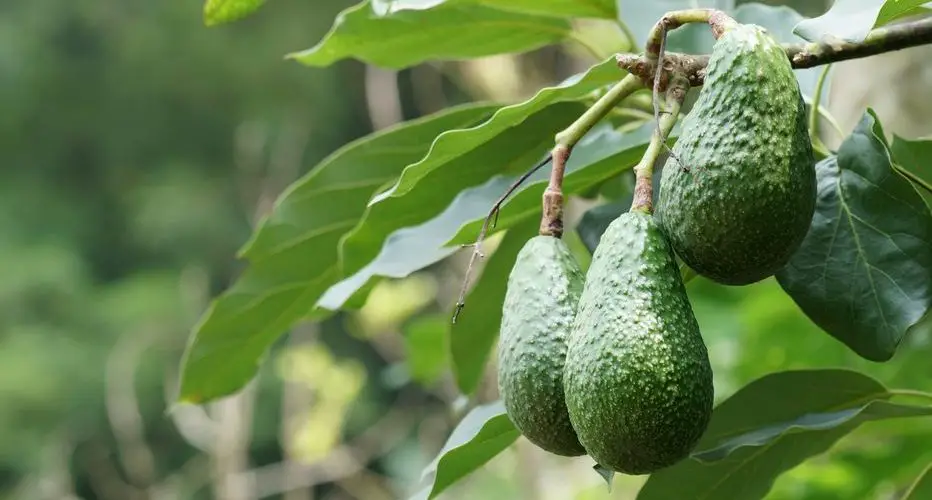Avocado, an inexhaustible source of antioxidants, essential fatty acids, and vitamin E, is a fruit/vegetable rich in benefits that delights our taste buds in various preparations. Whether enjoyed in salad, guacamole, or bruschetta, its creamy and tender texture is irresistible. Imagine having an endless supply right on your plate! Yes, you can grow avocados at home from a small seed to a green fruit. However, proper care is essential for your avocado tree to thrive. Follow our advice, and you’ll never need to buy avocados again!
The Secret is in the Seed!
Choosing the right avocado seed is crucial. Select a pit that is at least the size of a walnut for planting. Carefully extract the seed from a ripe and soft avocado to ensure it is mature. Be gentle during extraction to avoid damaging the seed.
How to Germinate the Seed
Preparation
Once you’ve removed the seed, wash it thoroughly to remove any flesh remnants and let it dry for a few days.
Using Toothpicks
Insert three toothpicks horizontally into the thickest part of the seed to suspend it in a glass of water, ensuring the base of the seed is submerged while the top remains exposed.
Germination Process
If you prefer to plant directly in the soil, soak the seed in hot water for 30 minutes to soften the outer layer and promote root growth. Planting directly in the soil is slower and requires careful attention.
Transplanting to a Pot
After a few weeks, the seed will split, and roots and stems will begin to emerge. Once the first leaves appear, it’s time to transplant the seed into a pot with well-draining potting soil. Keep the soil moist but not waterlogged.
Preparing the Pot and Soil
- Use a pot no larger than a gallon with well-draining potting soil.
- Dig a small hole and bury the seed just below the soil surface, leaving about half an inch of the seed above the soil line.
- Water generously and place the pot in a warm, bright spot around 20°C, away from drafts.
Initial Care After Transplantation
Light
Avocado trees need plenty of sunlight, ideally 4-6 hours daily. Ensure they are in a spot with bright, indirect light if growing indoors.
Soil
Use rich, loamy, well-drained soil. Test your soil if planting outdoors, ensuring a pH between 5 and 7.
Watering
Water frequently and deeply, allowing the soil to dry slightly between waterings. Increase watering during hot summer months, especially for young trees.
Fertilizer
Do not fertilize your avocado tree in the first year. Afterward, use a balanced fertilizer for citrus or one specifically designed for avocados, rich in nitrogen.
Transplanting Outdoors
Climate Considerations
Choose a spot in your garden with about eight hours of sunlight daily and well-drained, aerated soil. Avocado trees thrive in tropical and subtropical climates, with temperatures ranging between -4° and 40°C, ideally between 15° and 25°C.
Outdoor Transplant Steps
- Dig a deep and slightly wide hole.
- Add compost and place the seed in the hole.
- Fill in with soil, pressing down as you go.
- Water generously.
Tips for Growing Outdoors
Avocado trees are flexible with temperature but thrive best between 15° and 25°C. In cold climates, grow them indoors in planters.
Common Problems and Solutions
Root Rot
Avoid overwatering to prevent root rot. If leaves turn yellow, reduce watering and ensure proper drainage.
Burnt Leaves
Too much sun can burn leaves. If they turn brown, move the tree to a cooler, less sunny spot.
Mineral Deficiency
Yellow leaves may indicate a lack of minerals. Fertilize regularly, about once a month, to avoid deficiencies.
Pests
Watch out for mites and caterpillars. Act quickly to remove pests before they become a significant problem.
FAQs
How long does it take to grow avocados?
Patience is key. From seed, avocados take 5-10 years to mature. Grafted young trees can produce fruit in about 4 years.
When to plant the avocado seed?
Spring is the best time for the seed to germinate and grow into a healthy avocado tree.




